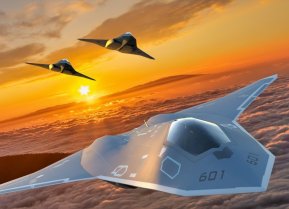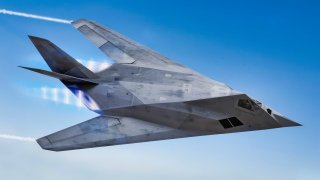Why the 'Retired' F-117 Stealth Fighter is Still Soaring for the U.S. Air Force
Despite its official retirement in 2007, the F-117A Nighthawk, a pioneer in stealth technology, remains a valuable asset for the U.S. Air Force, continuing to participate in various missions and trainings.
Summary: Despite its official retirement in 2007, the F-117A Nighthawk, a pioneer in stealth technology, remains a valuable asset for the U.S. Air Force, continuing to participate in various missions and trainings. Recently, it has been involved in aerial refueling certification with the KC-46A Pegasus, underscoring its ongoing utility. The F-117's design, emphasizing low observability, makes it an excellent tool for simulating advanced threats like cruise missiles in defense exercises. Though surpassed by more modern stealth aircraft like the F-22 and F-35, the F-117 offers a unique blend of capabilities that are still relevant for training purposes. Its continued use highlights the adaptability of military assets and the enduring value of stealth technology in modern warfare training and tactics.
The F-117 Nighthawk: Still Serving the U.S. Air Force in Stealth and Strategy
The United States Air Force officially “retired” the F-117A Nighthawk from active service in 2007—yet, the single-seat, subsonic twin-engine stealth attack aircraft developed by Lockheed’s secretive Skunk Works division has continued to be flown periodically. There were even reports that the F-117 may have been secretly deployed to the Middle East in 2015.
More recently, in July 2019, a Nighthawk sporting a hybrid “aggressor paint scheme” was spotted over Death Valley, trailing behind a KC-135R Stratotanker. Subsequent spotting also suggested the stealth aircraft was being tested for aerial refueling—and finally this month, it was reported that the United States Air Force will complete certification of the F-117 with the KC-46A Pegasus, the service’s newest tanker.
AviationWeek first reported that the F-117 as a receiver was first mentioned in testimony from Andrew Hunter, the Air Force’s acquisition chief, to the House Armed Services projection forces subcommittee.
Why the F-117 remains in Operation
Though it might seem odd that an officially retired aircraft could receive the certification, the fact remains that the F-117 Nighthawk still serves a purpose with the U.S. Air Force. It was the first operational combat aircraft designed with stealth as its main characteristic.
It may be old, but it is still a stealth aircraft. That makes it an ideal training platform.
“When you look at 117s that come and land and do that stuff, they’re a stealth platform, right? Early days of stealth, but they’re still a stealthy platform,” explained Air National Guard boss Lt. Gen. Michael Loh in 2021. “So they can simulate things out there like cruise missiles that we would actually face. So are they a perfect platform for a cruise missile defense exercise? Absolutely.”
The Nighthawk was developed with the utmost secrecy in the 1970s while it made its first flight in 1981, entering service in 1983. However, it wasn’t until 1988 that the Air Force officially acknowledged its existence. A total of sixty-four including five YR-117A prototypes and 59 F-117As were produced.
It was designed to be virtually invisible to radar, and even difficult to spot with the naked eye. However, during the NATO bombing of Serbia, one was shot down by a unit of the former Yugoslav Army, the 3rd Battalion of the 250th Air Defense Brigade. Though the F-117 Nighthawk was the first operational aircraft designed to employ stealth technology, the fact that it could be taken down by ground-based air defenses highlights that stealth doesn’t mean “invisible.” No shortage of luck on the part of the anti-aircraft crew was likely involved as well.
That is why the F-117 continues to have a place in testing and training today.
As Brandon J. Weichert wrote for The National Interest earlier this year, “The F-117A Nighthawk’s stealth tech might be obsolete next to that stealth technology employed by the F-22A Raptor or the F-35 Lightning II. But that doesn’t mean that these birds are antiquated compared to other warplanes out there. What’s more, and this is where the Air Force’s thinking on the matter is headed, the F-117A would make a great training plane for pilots who are going to be piloting the most advanced stealth planes that the Air Force can field.”
Author Experience and Expertise: Peter Suciu
Peter Suciu is a Michigan-based writer. He has contributed to more than four dozen magazines, newspapers, and websites with over 3,200 published pieces over a twenty-year career in journalism. He regularly writes about military hardware, firearms history, cybersecurity, politics, and international affairs. Peter is also a Contributing Writer for Forbes and Clearance Jobs. You can follow him on Twitter: @PeterSuciu. You can email the author: [email protected].


